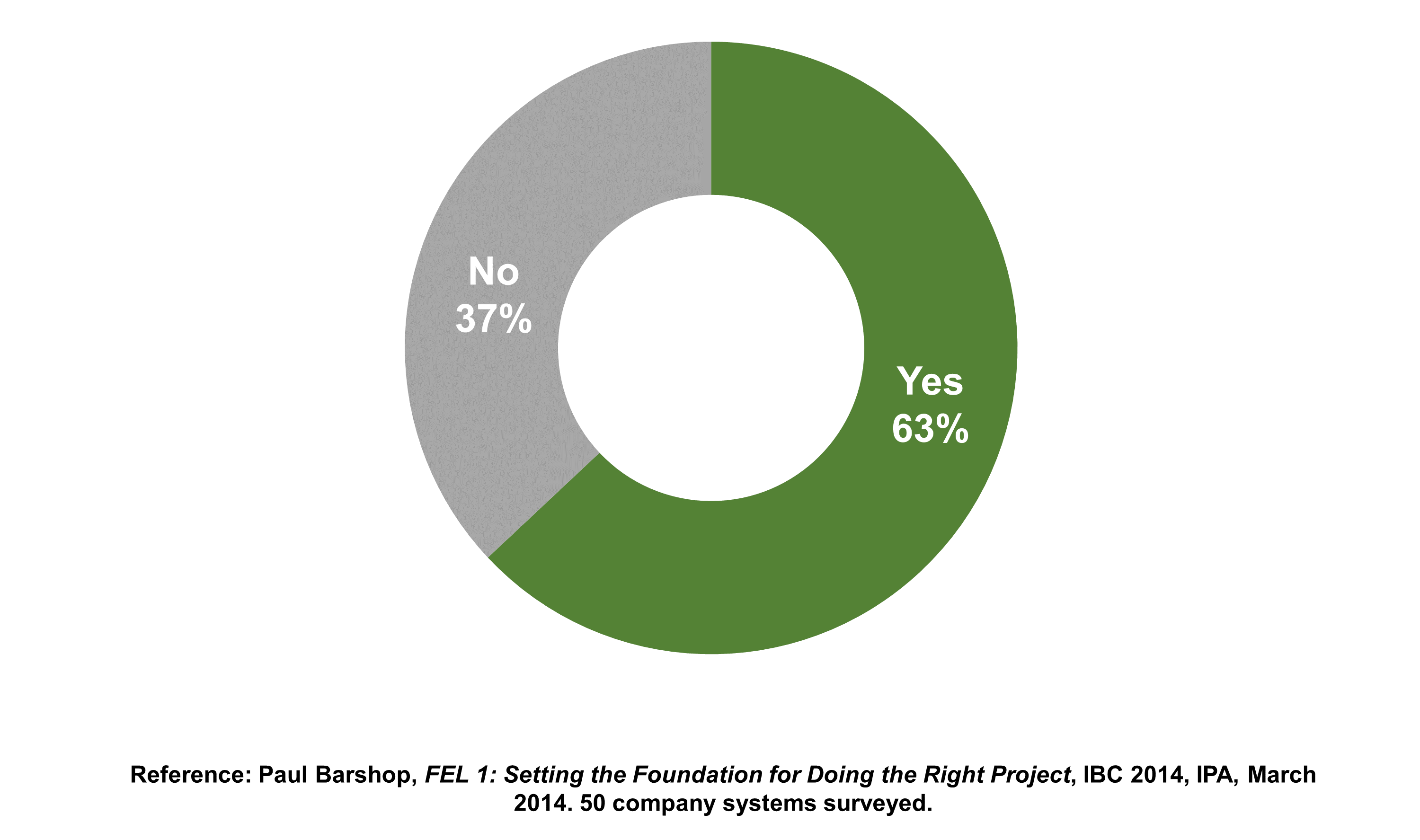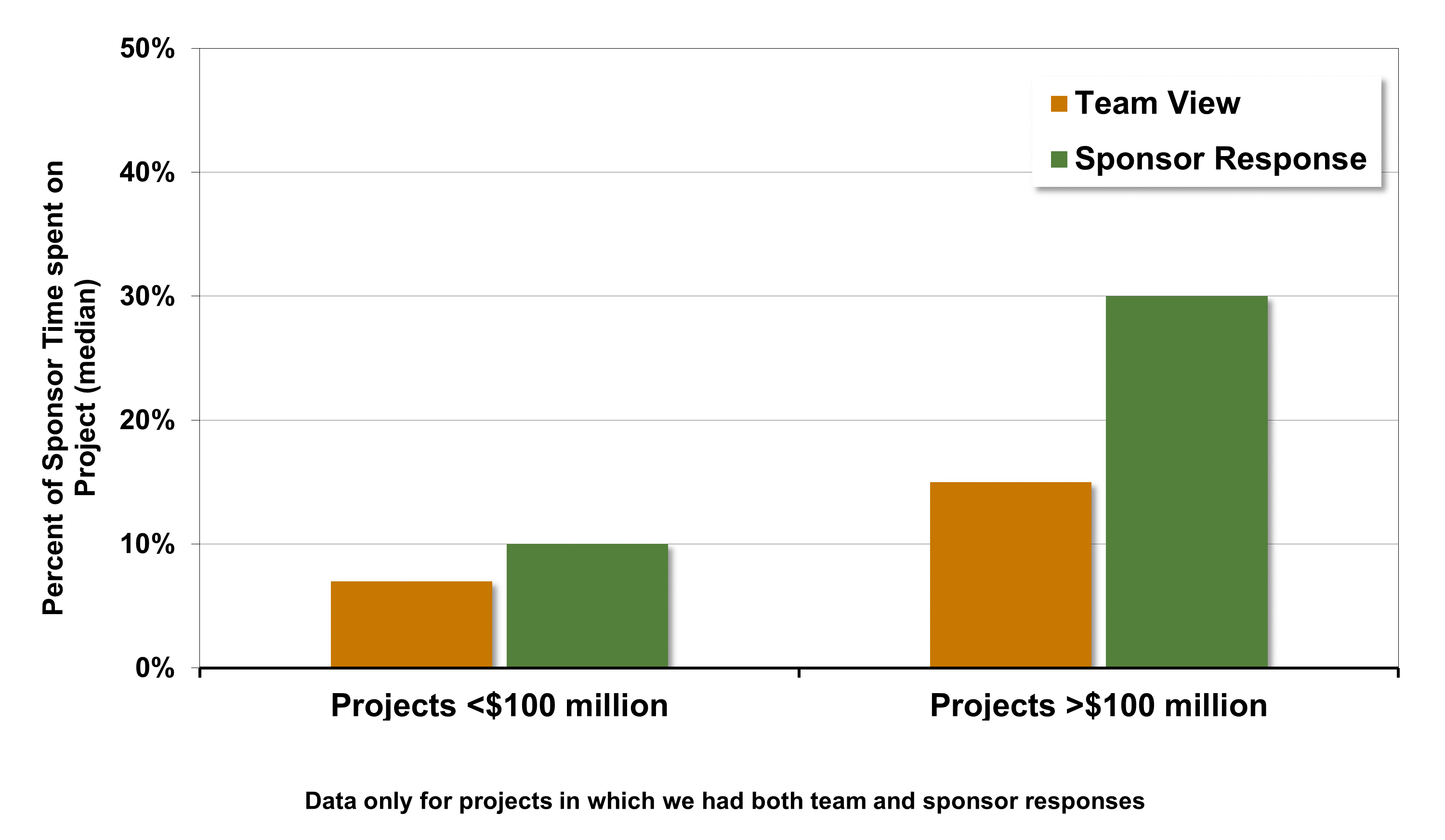The Role of the Project Sponsor
The project sponsor’s engagement in a capital project is critical to its success. As IPA’s Paul Barshop writes about the role in the book Capital Projects: What Every Executive Needs to Know, “Weak project sponsorship leads to projects that do not produce as much value as they could have and projects that regularly fall short of delivering that value promised at authorization.”
IPA has been examining the sponsor’s role in the delivery of capital projects for many years; much of our point of view has come from project teams and project systems personnel to gain an understanding of what they need and the value from sponsors.
For its latest look at the topic, IPA’s Director of Capital Solutions, Allison Aschman, and IPA Analysts David Kiomijian and Lynn Dickey analyzed hundreds of IPA interviews performed directly with owner company project sponsors to glean their first-person perspectives about what their role should be. At the 2019 annual meeting of the Industry Benchmarking Consortium (IBC 2019), Aschman presented an overview of the project sponsor’s role based on those interviews combined with IPA’s body of work on the topic.
The following are important points and takeaways from the IBC 2019 presentation, which are intended to help owners consider ways to more effectively deploy this role at their companies.
Who Is the Project Sponsor?
Across Industry, the sponsor is broadly defined as the “person accountable for the value delivered by a project.” This person may be the individual who identifies the business opportunity and leads the effort to develop the full venture (i.e., the person that “wants” the project). Or the sponsor may be an individual assigned to the project to be responsible for the value after the opportunity has been identified and approved to pursue.
How Are Sponsors Assigned to Projects?
The process of assigning someone to serve as the sponsor is dependent on the organization. Some companies retain dedicated staff to perform the sponsor role in either the business function or projects organization. For most companies, however, the “appropriate” person is assigned (from the business, operations, etc.) and the mechanisms to make that assignment range from structured and official to ad hoc.
In a sample of more than 250 projects evaluated by IPA, only half of the project sponsors were officially appointed to their role. The remaining 50 percent were assigned by “default”, i.e., by virtue of their position in the company, they were the “automatic” sponsor. Project performance data for this sample of projects show that one approach is not better than the other, but the default assignment carries its own potential issues (e.g., alignment on the value drivers, business objectives, and project strategy) if the project sponsor is not ready or willing to take on the job.
Three Elements of Accountability
As previously mentioned, the sponsor has responsibility to deliver the project’s business value, and this accountability can be broken down across three main elements.
Value Is There to Begin With—The sponsor is accountable for the business planning phase of the Front-End Loading (FEL) process (FEL 1). It is accountable for the initial business case presented at the FEL 1 decision gate, but the role does not complete all FEL 1 work alone. The sponsor provides guidance on the opportunity’s objectives, constraints, and trade-offs. Documented sponsor roles and responsibilities support better FEL 1 decision quality, making it much more likely that the right project will ultimately be selected.
Unfortunately, IPA research shows that only 63 percent of companies have officially documented FEL 1 roles to facilitate this work (Figure 1).

Maximum Value Is Extracted—Given even a robust business case coming out of FEL 1, further decisions are still necessary to maximize the project’s value. The sponsor establishes the basis for the project frame, ensuring the project scope matches the required functionality. The sponsor also should find the right balance between cost and quality and between reward and risk. Like the initial business case brought before the FEL 1 decision gate, the sponsor is accountable for the final business case delivered at the end of FEL 2.
Value Is Not Lost—Once the opportunity is defined as a project, primary accountability for the project delivery shifts to the project manager or director. Now it is up to the project team to plan and execute the scope within the project frame. But the project sponsor remains involved, overseeing and integrating work outside the project manager’s responsibility to ensure value is obtained from that asset.
Integration Leadership
Another key aspect of the sponsor’s role is serving as the integrator, both on the business and projects organization sides of the house. On the business side, for instance, the boundary between the business unit leader and sponsor is often blurred. The sponsor and business unit leader must decide and agree on the objectives asset functionality, project scope, schedule targets, and acceptable cost budget. The boundary between project sponsor and project manager also must be clear. The project sponsor and project manager need to be on the same page concerning the project scope, technical design, project team structure and members, project strategy, and contracting and suppliers.
Integration does not happen naturally. It requires strong leadership, consistent engagement, and organizational knowledge. Unfortunately, our research shows that companies, and sponsors, struggle with these elements.
Based on IPA’s project sponsor interviews, sponsor engagement with teams ranges from daily to very infrequent, with most sponsors meeting with their teams once or twice a week, or at least once per month. Both project teams and project sponsors agree that bigger, more complex projects get more sponsor time. Project sponsors report spending about 40 percent of their time on projects when they are greater than $500 million; this drops to about 10 percent when projects fall below this threshold. However, project teams perceive that the project sponsor’s involvement as being much lower than it is actually. For projects greater than $100 million, teams believe the sponsor is spending about 15 percent of their time on the project. But the sponsors surveyed in the study report, on average, they actually spend 30 percent of their time on larger projects (Figure 2).

Project sponsor turnover is frequent, with about one-quarter of sponsors turning over during the critical FEL phases, according to IPA research. This increases to almost 40 percent when execution is included.
IPA project data also show that most sponsors are relatively new to their role, having been in “regular” (non-project) roles for 2 years or less. Further, 38 percent of those interviewed by IPA indicated that this was their first time as a project sponsor. There is also no trend toward smaller projects for first time sponsors, with new sponsors just as likely to be assigned to large projects as experienced sponsors. In fact, two of the biggest projects in the research dataset had first-time sponsors in the role.
An Enduring Problem
Framing and defining an economically viable project is not easy. Often, the sponsor has other day-to-day assignments to deal with in addition to their project sponsorship role. Another common frustration is that sponsors are expected to make decisions in areas where they may have limited experience. As a consequence, they can end up providing insufficient direction on the goals, priorities, and constraints to guide business case development.
Alignment between the business organization sponsoring a project and the projects organization developing the project is a critical driver of success. The project sponsor can be the lead driver of project success. Despite its importance, the lack of alignment between the business and project team is an enduring problem for many companies, and the onus should be on the sponsor to ensure this integration is achieved.
Complete the form below to request more information on this topic.